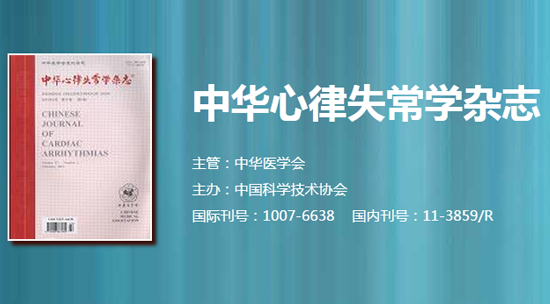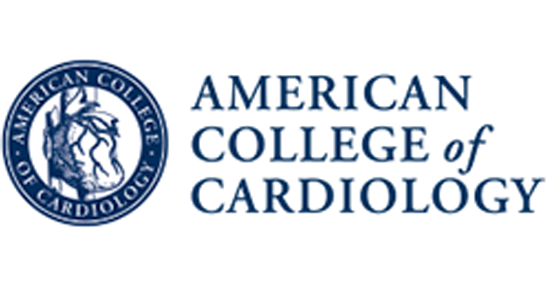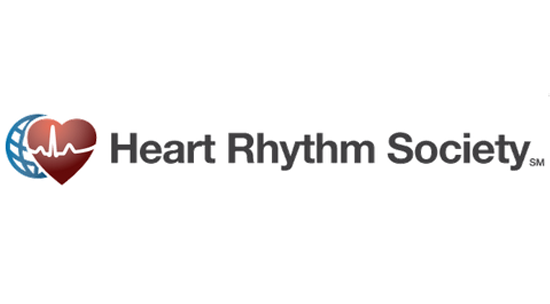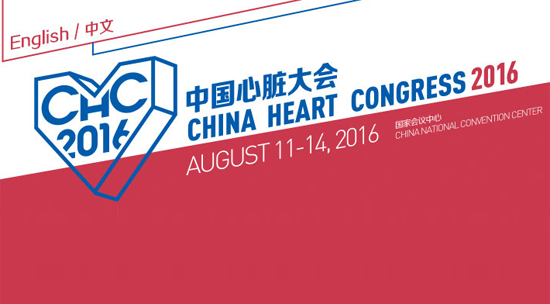HeartRhythm主编—陈鹏生教授语音速递(五月刊 英文版)
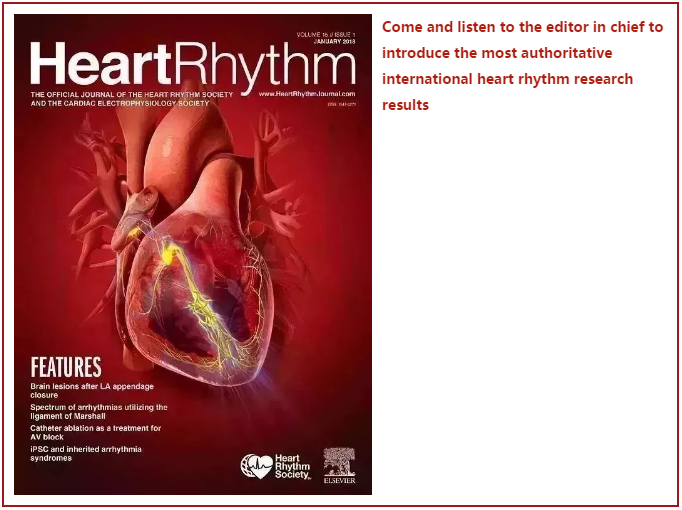

Peng-Sheng Chen
The featured paper is titled “Long-term prognosis of women with Brugada syndrome and Electrophysiologic study.” Among 770 patients studied, 177 (23%) were female. As compared with males, females presented less frequently with a type 1 ECG pattern, had a higher rate of family history of sudden cardiac death, and had less sustained ventricular arrhythmias on EP study. An ICD was inserted in 48 females (27.1%). During a mean follow-up of 122 months, 5 females (2.8%) experienced a cardiovascular event compared to 42 males (7.1%). These data show that women represent a minor fraction among patients with Brugada syndrome. Neither clinical risk factors nor EP study predicts future arrhythmic events. Only atrial fibrillation and positive genetic test were identified as risk factors for future arrhythmic events. The paper was accompanied by an editorial by Dr Sami Viskin titled “The top ten reasons to avoid electrophysiologic studies in Brugada syndrome.”
The next paper is “The role of timing in treatment of atrial fibrillation: An AFFIRM substudy”. The authors performed a secondary analysis of subjects from the Atrial Fibrillation Follow-up Investigation of Rhythm Management (AFFIRM) study. Of the 4060 AFFIRM subjects, 2526 subjects (62.2%) had their first episode of AF within 6 months of study enrollment. Participants with "new" AF had a decreased risk of all-cause mortality (P = .001) than did those with prior AF diagnoses. There were no differences in mortality, cardiovascular hospitalizations, or stroke between rate and rhythm control strategies in either AF subgroup. These data show that AFFIRM subjects diagnosed with AF within 6 months of study enrollment showed no difference in survival, cardiovascular hospitalization, or ischemic stroke between rate and rhythm control strategies. Superiority of rhythm control strategies reported by newer AF trials may be more attributable to the refinement of AF therapies and less related to the timing of intervention.
Coming up next is “Connexin45 (GJC1) loss-of-function mutation contributes to familial atrial fibrillation and conduction disease”. A 4-generation family with autosomal-dominant AF and other arrhythmias was recruited. A novel genetic locus for AF was mapped to chromosome 17q21.3. Sequencing analysis revealed a heterozygous mutation in the mapping region, in the GJC1 gene encoding connexin45 (Cx45). The mutation cosegregated with AF in the family and was absent in 632 control individuals. The mutation decreased the coupling conductance in cell pairs, likely because of impaired subcellular localization. This study defines a novel genetic locus for AF on chromosome 17q21.3 and reveals a loss-of-function mutation in GJC1 (Cx45) contributing to AF and other cardiac arrhythmias.
Next up is “Catheter Ablation of the Left and Right Atrial Appendages without Isolation in Persistent Atrial Fibrillation”.This study describes a method to map and ablate appendage drivers without complete electrical isolation. Among the 113 patients who underwent an ablation procedure for persistent AF, RF ablation terminated AF in 51 patients (45%). The mean AF cycle length in the RA appendage was shorter than that in the LA appendage. The most frequent target in the RA was the RA appendage. Discontinuing RF ablation upon AF termination or conduction slowing prevented LA appendage isolation. After a mean follow-up of 24 months, 89 patients (78%) remained arrhythmia-free without antiarrhythmic medications. The authors conclude that an ablation strategy guided by the AF cycle length addresses LA appendage drivers without complete electrical isolation and also helps identify the RA appendage as a source of persistent AF.
The following article is “Predictors of ischemic stroke for low-risk patients with atrial fibrillation: A matched case-control study”. Low-risk patients are those with CHA2DS2-VASc score of 0 in men or 1 in women. This was a matched case-control study conducted at a single tertiary institution. The authors identified 44 patients with de novo ischemic stroke and incidentally found AF with a low-risk CHA2DS2-VASc score. A control group was selected for patients with AF and a low-risk CHA2DS2-VASc score but without ischemic stroke and oral anticoagulant therapy. The authors found that smokers were more prevalent and the mean white blood cell count was significantly higher in the stroke group than controls. In multivariate analysis, smoking was the only significantly associated factors. In the stroke group, 14 of 44 patients (31.8%) had multiple vascular territory infarcts. The authors conclude that smoking was the predictor associated with ischemic stroke in patients with AF and a low-risk CHA2DS2-VASc score.
The next paper is “Atrial Fibrillation Burden and Heart Failure: Data from 39,710 Individuals with Cardiac Implanted Electronic Devices”. The authors used a nationwide, remote monitoring database of cardiac implantable electronic devices (CIEDs) linked to Medicare claims and identified 39,710 patients with nonpermanent AF, undergoing new CIED implant, stratified by baseline heart failure. The outcomes were new-onset HF, HF hospitalization, and all-cause mortality at 1 and 3 years. Among those without HF, increasing device-based AF burden was significantly associated with increased risk of new-onset HF and all-cause mortality. Among patients with HF, increasing AF burden was significantly associated with increased risk of HF hospitalization and all-cause mortality. These findings indicate that among older patients with AF receiving a CIED, increasing AF burden is significantly associated with increasing risk of adverse HF outcomes and all-cause mortality.
The following paper is “Transcatheter embolic coils to treat peridevice leaks after left atrial appendage closure”. The authors studied the use of endovascular coiling of the appendage to address persistent peridevice leak in patients undergoing left atrial appendage closure, or LAAC with the Watchman device. Twenty patients were identified with a mean leak size of 3.8 mm. Acute procedural success was achieved in 95% of patients. Complete or significant reduction in flow beyond the LAAC device was achieved in 61% and 33% of patients, respectively. The authors conclude that appendage coiling represents a new therapeutic tool to address the peridevice leaks, which is a potential source for thromboembolism.
Up next is “Close-coupled Pacing to Identify the 'Functional' Substrate of Ventricular Tachycardia: Long-term Outcomes of the Paced Electrogram Feature Analysis (PEFA) Technique.” Close-coupled pacing stresses the myocardium's conduction capacity and may reveal late potentials and fractionation, which may be the functional substrate for VT. The authors studied 40 patients with scar-related VT undergoing their first ablation. A closely coupled extrastimulus (ventricular effective refractory period + 30 ms) was delivered at the right ventricular apex while mapping with a high-density catheter. Sites of functional impaired conduction exhibited increased electrogram duration due to late potentials and fractionation. Noninducibility was achieved in 34 of 40 patients (85%) after ablation. Median follow-up was 711 days during which 35 of 39 patients (89.7%) did not have VT recurrence, and 3 of 39 (7.5%) died. The authors conclude that functional substrate ablation resulted in high rates of noninducibility and freedom from VT. Randomized multicenter trials are warranted to assess this next phase of VT ablation.
The next paper is “Automated rhythm-based control of radiofrequency ablation close to the atrioventricular node: pre-clinical, animal and first-in-human testing”. The objectives of this study were to build and test a control system able to monitor cardiac rhythm and automatically terminate ablation energy when required. The device's ability to prevent heart block was tested in 5 sheep. First-in-human testing was then performed in 12 patients undergoing AV nodal reentrant tachycardia ablation. Risk conditions necessitating shutoff of ablation were detected by the device with 100% sensitivity and 94% specificity, automatically terminating ablation while still allowing successful ablation in all patients. Device shutoff of ablation was always faster than human response. In each of 5 sheep, 40 consecutive attempts to cause heart block by ablating over the His bundle were unsuccessful because of automatic shutoff in response to rhythm change. The authors conclude that automated shutoff of ablation close to the AV node in response to markers of the risk of heart block is feasible with high accuracy as well as faster response than human response. The system may improve the safety of ablation near the AV node by preventing heart block.
Up next is “Intermediate Term Performance and Safety of His Bundle Pacing Leads”.The His bundle pacing was performed using a Medtronic 3830 pacing lead. Of 295 attempts, successful His bundle pacing implantation was seen in 274 cases (93%). Mean follow-up duration was 22.8 months. Mean His bundle pacing capture threshold at implant was 1.1 V at 0.8 ms, which significantly increased at chronic follow-up to 1.7 V at 0.8 ms. Threshold was ≥ 2.5 V in 24% of patients, and 28% had an increase in His bundle pacing threshold ≥1 V. Loss of His-bundle capture at follow-up was seen in 17%. There was a total of 31 (11%) lead revisions, primarily for unacceptably high thresholds. These data show that, although His bundle pacing can prevent or improve pacing-induced cardiomyopathy, the elevated capture thresholds, loss of His-bundle capture, and lead revision rates at intermediate follow-up are of concern. Longer-term follow-up data from multiple centers are needed.
The next paper is “Staphylococcus bacteremia without evidence of a cardiac implantable electronic device infection”. Three hundred sixty consecutive patients with a CIED and concurrent staphylococcus bacteremia were reviewed. At the initial presentation with staphylococcus bacteremia, 178 patients had no evidence of CIED infection. Of these, 132 (74%) had another identified source of infection. Among the 178 patients without CIED infection, 18 (10%) had empirical CIED removal during the initial bacteremia. Among those who did not undergo CIED removal, staphylococcus bacteremia subsequently relapsed in 19% and relapse rates were not different for those with or without another identifiable source at the initial presentation. Relapse was strongly associated with the duration of staphylococcus bacteremia >1 day. Despite the absence of CIED infection, 1-year mortality was 35% and empirical device removal during the initial presentation was associated with survival benefit. In conclusion, for patients with staphylococcus bacteremia without evidence of CIED infection, relapse is predicted by the duration of bacteremia. Empirical CIED removal appears to be associated with a survival benefit, although there are likely clinical situations in which this could be deferred.
Coming next is “Cardiac Resynchronization Therapy and Ventricular Tachyarrhythmia Burden”. The authors included 1281 patients with LBBB from Multicenter Automatic Defibrillator Implantation Trial-Cardiac Resynchronization Therapy, or MADIT-CRT. During a mean follow-up of 2.5 years, The VT rate per 100 person-years was significantly lower in the CRT-D group compared with the ICD group. Multivariate analysis demonstrated that CRT-D treatment was associated with a 32% risk reduction for VT recurrence, 57% risk reduction for recurrent lifethreatening VT, 54% risk reduction for recurrent appropriate ICD shocks, and 25% risk reduction for the combined endpoint of VT and death. The effect of CRT-D on VT burden was more pronounced among patients in New York Heart Association functional class I. The authors conclude that in patients with LBBB and heart failure, early intervention with CRT-D reduces mortality, VT burden, and frequency of multiple appropriate ICD shocks. VT burden is a powerful predictor of subsequent mortality.
Next up is “Causes of syncopal recurrences in patients treated with permanent pacing for bradyarrhythmic syncope: Findings from the SYNCOPACED registry”. The purpose of this study was to assess the causes of syncope/collapse recurrences after pacemaker implantation for bradyarrhythmic syncope. The study included 1364 consecutive patients undergoing pacemaker implantation for bradyarrhythmic syncope. During a median follow-up of 50 months, 213 patients (15.6%) reported at least 1 syncope/collapse recurrence. The risk of syncope/collapse recurrence was highest in patients who underwent implantation for cardioinhibitory vasovagal syncope (26.4%), followed by unexplained syncope and chronic bifascicular block (21.5%), cardioinhibitory carotid sinus syndrome (17.2%), atrial fibrillation needing pacing (15.5%), atrioventricular block (13.6%), and sinus node disease (12.5%) (P = 0.017). In 26.8% of cases, the mechanism of syncope/collapse remained unexplained. These data show that in patients receiving a pacemaker for bradyarrhythmic syncope, reflex syncope and orthostatic hypotension are the most frequent mechanisms of syncope/collapse recurrence after implantation. Pacing system malfunction, structural cardiac diseases, and tachyarrhythmias are rare mechanisms. The mechanism remains unexplained in >25% of patients.
Coming up is a paper titled “Sudden Cardiac Death During Nighttime Hours”. From the population-based Oregon Sudden Unexpected Death Study, the authors evaluated sudden cardiac death cases that occurred in the community between 10 PM and 6 AM (nighttime) and compared them with daytime cases. A total of 4126 sudden cardiac death cases met criteria for analysis and 22.3% (n = 918) occurred during nighttime hours. Women were more likely to present with nighttime SCD than men. In a multivariate regression model, female sex, medications associated with somnolence/respiratory depression and chronic obstructive pulmonary disease/asthma were independently associated with nighttime sudden cardiac death. Caution is advisable when prescribing central nervous system-affecting medications to patients at an increased risk of sudden cardiac death, especially women.
The next article is “Identification of patients at risk of sudden cardiac death in congenital heart disease: The PRospEctiVE study on implaNTable cardIOverter defibrillator therapy and suddeN cardiac death in Adults with Congenital Heart Disease (PREVENTIONACHD)”. The PREVENTION-ACHD risk score model assigns 1 point each to coronary artery disease, New York Heart Association class II/III heart failure, supraventricular tachycardia, systemic ejection fraction < 40%, subpulmonary ejection fraction < 40%, QRS duration ≥ 120 ms, and QT dispersion ≥ 70 ms. The study included 783 consecutive patients with ACHD. The PREVENTION-ACHD risk score model identified 58 high-risk patients. The Kaplan-Meier estimates were 7% in the high-risk group and 0.6% in the low-risk group, with hazard ratio 12.5. The authors conclude that the PREVENTION-ACHD risk score model provides greater accuracy in SCD or VT/VF risk stratification as compared with current guideline indications and identifies patients with ACHD who may benefit from preventive implantable cardioverter-defibrillator implantation.
The following article is “Atrial Arrhythmias and Patient-Reported Outcomes in Adults with Congenital Heart Disease: an International Study”. Atrial arrhythmias (ie, intra-atrial reentrant tachycardia and atrial fibrillation) are a leading cause of morbidity and hospitalization in adults with congenital heart disease. A total of 4028 adults with congenital heart disease were enrolled into the study. Among them, 707 (17.6%) had atrial arrhythmias. The authors found that patients with atrial arrhythmias had significantly worse patient reported outcome scores with respect to quality of life, perceived health status, psychological distress (ie, depression), and illness perception. The authors conclude that atrial arrhythmias in adults with congenital heart disease are associated with an adverse impact on a broad range of patient reported outcomes consistently across various geographic regions.
The next paper is “A circadian clock in the sinus node mediates day-night rhythms in Hcn4 and heart rate”. The authors used a mouse model for these studies. Spontaneous beating rate of isolated (ie, denervated) sinus node preparations exhibited a day-night rhythm concomitant with rhythmic messenger RNA expression of ion channels including hyperpolarization activated cyclic nucleotide gated potassium channel 4 (HCN4). The day-night heart rate difference in mice was abolished by HCN block, both in vivo and in the isolated sinus node. The authors conclude that the circadian variation in heart rate involves sinus node local clock-dependent Hcn4 rhythmicity. Data reveal a novel regulator of heart rate and mechanistic insight into bradycardia during sleep.
The final original research article is titled “Stimulation and propagation of activation in conduction tissue: Implications for left bundle branch area pacing”. The purpose of this study was to describe the pacing characteristics of left bundle and to study the role of pacing pulse width in overcoming left bundle branch block. Twenty fresh ovine heart slabs were used for the study. The maximum radius of the left bundle early activation increased up to 13.4 mm from the pacing stimulus, and the time from stimulus to evoked potential shortened when pacing pulse width was increased from 0.13 to 2 ms at baseline. Conduction slowing and block induced by cooling could be resolved by increasing pacing pulse width from 0.25 to 1.5 ms over a distance of 10 mm from the pacing stimulus. The left bundle strength-duration curve was shifted to the left of the myocardial strength-duration curve. The authors conclude that increasing pulse width resolved conduction slowing and block and bypassed the experimental model of fascicular block in left bundle. The strength duration curve of left bundle was shifted to the left of the myocardium strength duration curve and could be captured from a distance by optimizing pulse width.
These above original articles are followed by a contemporary review titled “Epigenetics in atrial fibrillation: a reappraisal”. Dr Warren Jackman wrote a Viewpoint titled “Accessory Pathway Recording and Ablation” as the 5th entry in our series of articles to celebrate the 30th year of RF ablation. Dr Douglas Zipes wrote an article to celebrate the life of Dr Bernard Lown, who passed away in February 2021.
I hope you enjoyed this podcast. For Heart Rhythm, I’m the Editor-In-Chief, Dr. Peng-Sheng Chen.
